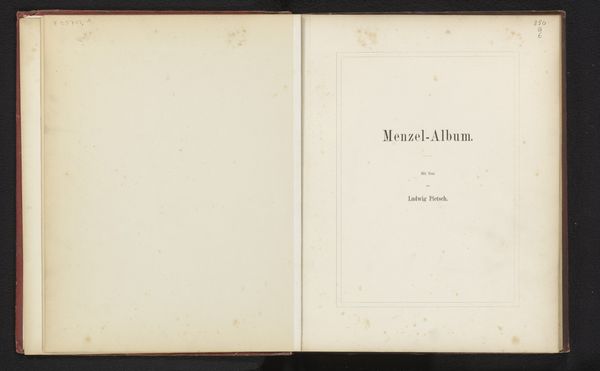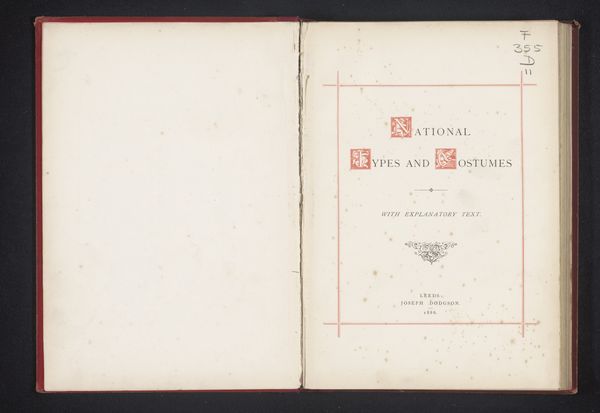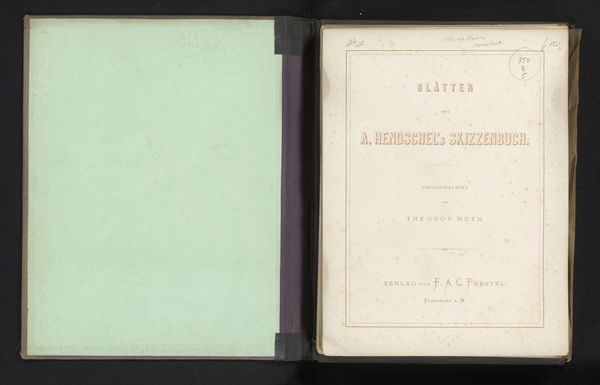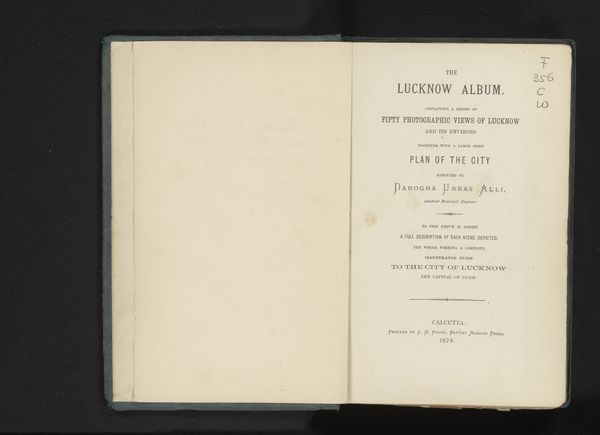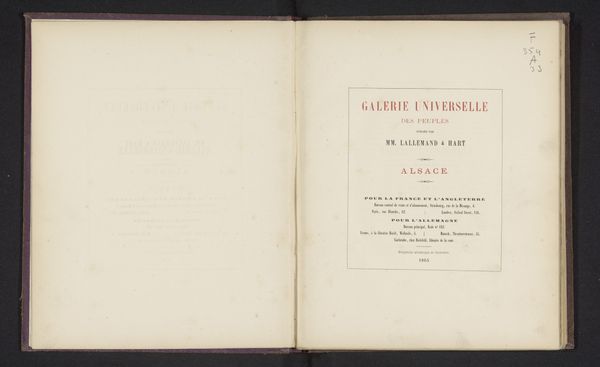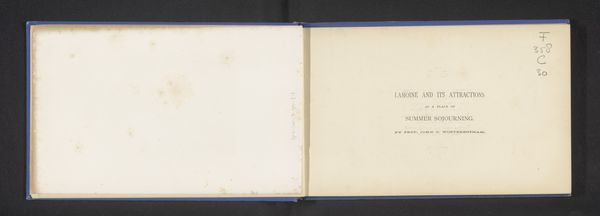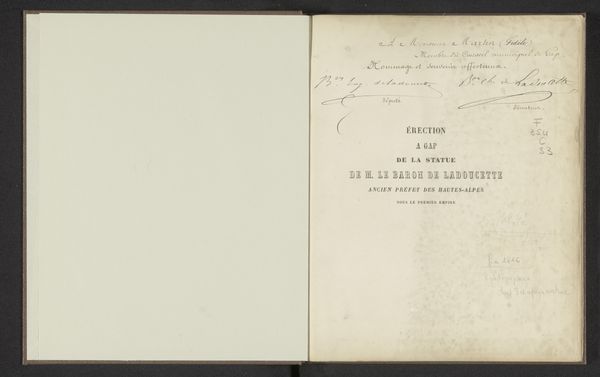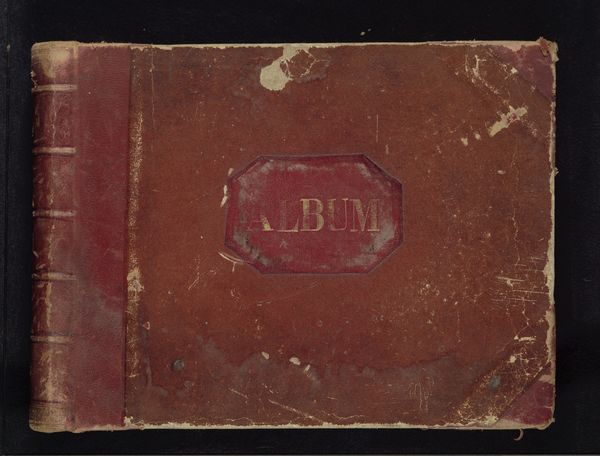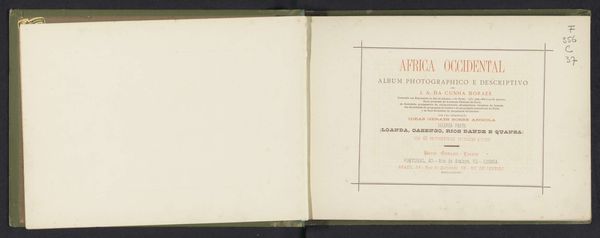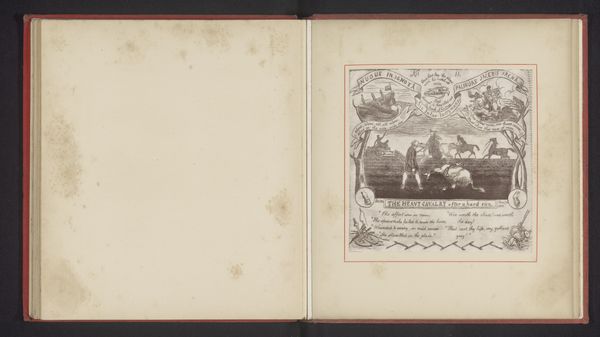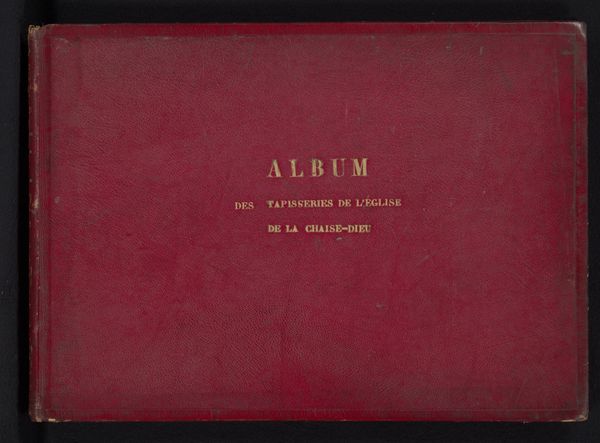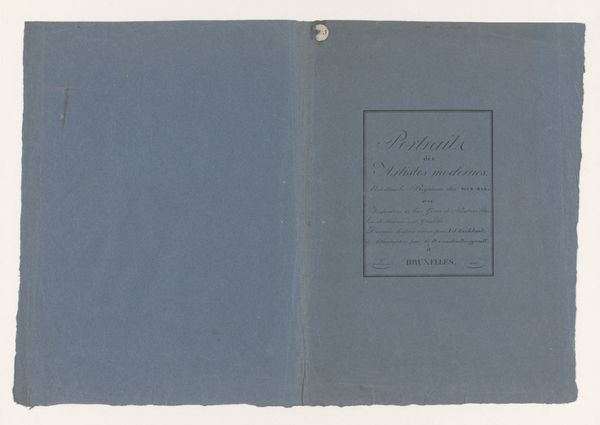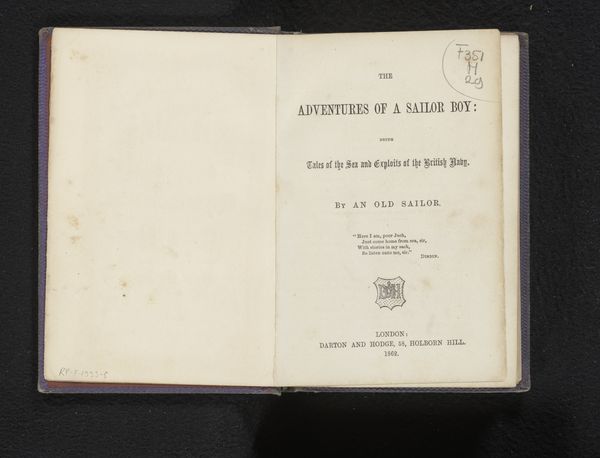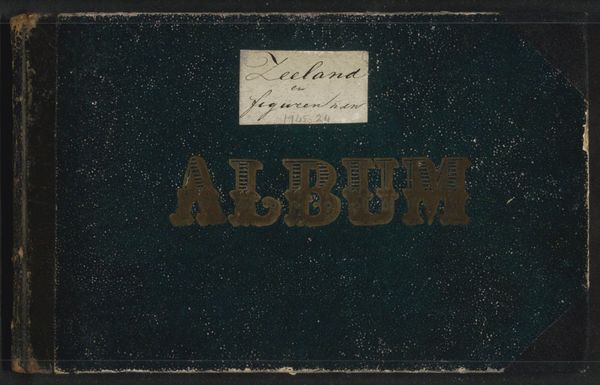
Album-lyrique, biographique, illustré de cinquante compositeurs et musiciens c. 1868
0:00
0:00
print, paper, ink
#
portrait
# print
#
paper
#
ink
#
watercolor
Dimensions: height 158 mm, width 233 mm, thickness 7 mm
Copyright: Rijks Museum: Open Domain
Editor: This is "Album-lyrique, biographique, illustré de cinquante compositeurs et musiciens" from around 1868, featuring work by Justin Lallier in ink and paper. It has an intimate feeling because it’s hand-written, but also has the feel of something that was produced for wider circulation. What stands out to you? Curator: The most prominent aspect for me is the interplay between public image and private expression. This album, promising portraits of fifty composers, positions itself within a larger narrative of celebrity and artistic legacy. However, the handwritten dedication on the facing page introduces an element of intimacy. How do we reconcile the commodification of artistic identity with the personal connections music fosters? Editor: That’s interesting. The juxtaposition makes me think about the composer's identity. Was the dedication an important element of how Lallier wanted the artist perceived, or was it separate from the commercially printed image? Curator: Exactly. Think about who has the privilege to even have a biographical album produced in their name? Who is included, and perhaps more importantly, who is excluded? This speaks volumes about the social and cultural hierarchies of the time. What narratives are being constructed and reinforced by presenting these fifty composers in this way? Editor: So, looking at this piece isn’t just about appreciating the art itself, but also understanding the systems of power at play when deciding who gets celebrated and remembered. Curator: Precisely. This album isn’t merely a collection of portraits. It's a reflection of societal values and a powerful statement about artistic merit as defined by a particular historical context. And what's striking is how similar mechanisms still influence the contemporary art world. Editor: I’ll definitely be thinking more critically about that moving forward! Thanks for giving me a new lens.
Comments
No comments
Be the first to comment and join the conversation on the ultimate creative platform.
